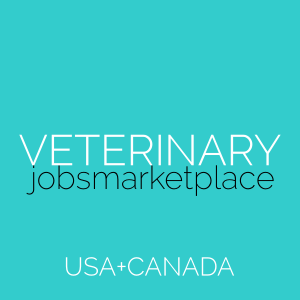
📄 Strong Skills, Weak Resume? What To Add & What To Subtract
Think of your resume as the first time a clinic team meets you. Before the handshake, before the scrubs, they start to picture how you’d fit into the rhythm of their day, how you’d handle a tricky case, or calm a nervous client. That picture begins forming from your very first line.
If your resume feels flat or crowded, that picture fades quickly. With a few careful adjustments, you can make every section earn its place and help the reader imagine you as part of their team…
 Find Your Next Career Move
Find Your Next Career Move
5 Modern Resume Essentials for Veterinary Professionals (What to Add)
Today’s veterinary employers want to quickly see that you’re qualified, skilled, and a great fit for their team. Here are five critical elements to include in your resume to make a strong impression:
1. Tailored Professional Summary
Begin with a concise summary or profile that highlights your veterinary background, key skills, and what role you’re seeking. This 2–3 sentence introduction should capture who you are as a professional and your top accomplishments.
Example: “Licensed veterinarian with 5+ years in small-animal practice, skilled in surgical dentistry and client communication.”
A targeted summary immediately shows employers you meet their needs and sets the tone for the rest of your CV. (Skip the generic “objective statement” — we’ll discuss that in the outdated section below.)
2. Clear Credentials and Licenses
Make sure your qualifications are front and center. List your education and veterinary credentials clearly, including your degrees (e.g. DVM/VMD or veterinary nursing diploma) and any required licenses or certifications.
For instance, mention your state veterinary license (USA), RCVS registration number (UK), or veterinary board certification (Australia) right away so employers know you’re legally ready to practice.
Also include specialty certifications (like Fear Free Certified or board certifications) that are relevant – these credentials instantly build trust that you have the proper training and expertise.
3. Quantifiable Achievements in Experience
Under each relevant job, highlight what you achieved, not just a list of duties. Use bullet points to showcase measurable results and contributions.
For example, instead of only saying “Responsible for surgery and patient care,” add accomplishments like “Performed 150+ successful surgeries in the past year” or “Increased client retention by 30% through improved follow-up care.”
Veterinary employers love to see outcomes – whether it’s improving patient recovery rates, growing a client base, reducing anesthesia complications, or mentoring junior staff. Concrete achievements (with numbers or specifics when possible) help your resume stand out from a pile of generic job descriptions.
4. Relevant Skills and Species-Specific Experience
Include a dedicated Skills section that spotlights your veterinary-specific skills and tools. List technical skills (e.g. ultrasound imaging, dental extractions, lab diagnostics, anesthesia monitoring) and relevant software (clinic management software like Cornerstone or ezyVet) that the job posting values.
Don’t forget soft skills crucial in animal care – like client communication, teamwork, and stress management – especially if the job description emphasizes them.
Break down your experience by species focus (e.g., “70% small animal, 20% exotic, 10% equine”) to give employers a clearer picture of your clinical focus. This helps them immediately see if your experience aligns with their patient demographic.
Tailor this section to each job by incorporating keywords from the posting. Many veterinary clinics (especially larger hospitals or corporate groups) use Applicant Tracking Systems (ATS) to screen resumes, so using the same language as the job ad can help you get past the digital gatekeepers.
5. Continued Education and Professional Involvement
Showcase your commitment to the veterinary field by listing relevant continuing education, special training, or professional affiliations. In an industry that evolves quickly (new treatments, tech, and best practices), employers value candidates who stay current.
Include any recent conferences, workshops, or courses you’ve completed (e.g. “Completed Avian Medicine workshop, 2023”) as well as memberships in professional bodies.
For example, being a member of the AVMA, BVNA, or local veterinary associations, or volunteering at animal shelters, demonstrates passion and engagement beyond your 9-to-5 duties. These extras can set you apart as an enthusiastic professional who is always learning and connected with the veterinary community.
5 Outdated Resume Details to Exclude (What to Drop)
Just as important as adding the right things is removing the wrong things. Certain old-fashioned resume elements can make you seem out of touch or even hurt your chances. Review your current resume and eliminate these five outdated details:
1. Generic Objective Statements
If your resume still opens with a bland objective (e.g. “Seeking a job where I can utilize my skills…”), it’s time to delete it. Hiring managers already know your objective is to get the veterinary job you applied for.
A vague objective wastes prime space and doesn’t add value. Instead, use the professional summary mentioned earlier to deliver something substantive about you.
Ditching the generic objective in favor of a tailored summary will make your resume feel more modern and relevant to employers’ needs. In short, drop the “what I want” statement and lead with “what I offer.”
2. “References Available Upon Request”
This line once appeared on almost every resume, but today it’s unnecessary and outdated. Remove any mention of references or phrases like “references available” from your CV.
Recruiters assume you’ll provide references when asked, so that statement only wastes space. In fact, listing references or this phrase is considered a resume faux pas by experts, as it offers no new information and can make your application look stuck in the past.
Use that space for more important details (like your achievements), and have a separate reference list ready to share only if a prospective employer requests it.
3. Too Much Personal Information
Modern resumes focus on professional qualifications – they do not include personal details that can invite bias or appear unprofessional. Remove any excess personal information such as your full street address, date of birth, marital status, or a headshot photograph.
In the US, UK, and Australia, employers do not expect a photo on a veterinary resume (in fact, due to anti-discrimination practices, including one can hurt your application). Similarly, a full mailing address isn’t needed; listing just your city and state (or region) is sufficient if location is relevant.
One study even found that candidates with long commutes were less likely to be hired – something you could be unwittingly revealing with a full address. Keep your contact header simple: just your name, phone, professional email, and maybe a LinkedIn profile.
The goal is to present hire-worthy facts (like credentials and experience) and omit personal data that could cause unintended bias or clutter.
4. Lengthy Job History or Irrelevant Details
An overly long, unfocused resume can signal that you’re behind the times. Trim down older or irrelevant information that doesn’t strengthen your case for the job at hand.
As a rule, you generally only need to include the last 10–15 years of experience – earlier jobs can be summarized or left off unless they are highly relevant. For example, if you’re applying for a veterinary surgeon role, the part-time restaurant job you held 15 years ago isn’t doing you any favors.
Likewise, remove details that are no longer relevant to veterinary work or the position level. That could mean cutting out outdated skills (e.g. proficiency in fax machines or outdated software), college honors from decades ago, or lengthy descriptions of routine tasks.
Remember, hiring managers in vet clinics want to quickly see how your recent experience and skills align with their needs; they don’t need a play-by-play of everything you’ve ever done. Keep it concise and pertinent – quality over quantity. (Aim for a resume no more than 1–2 pages in length, which is standard in the veterinary field.)
5. Outdated Formatting and One-Size-Fits-All Approach
Looks matter – an out-of-date format can make even strong content get overlooked. If your resume is built with dense paragraphs, tiny font, or fancy graphics, it’s time for a style refresh.
Avoid large blocks of text (which are hard to skim quickly) and break information into bullets and clear sections for readability. Also steer clear of overly elaborate designs or images on your resume.
Ten years ago, decorative elements or word art might have been trendy, but today most of those extras will be lost on (or filtered out by) applicant tracking systems. Stick to a clean, professional layout with black (or dark) text on a light background, and use standard, easy-to-read fonts.
Equally outdated is using the same resume for every application. Modern job seeking requires tailoring your resume for each position, highlighting the most relevant experience and using keywords from each specific job posting.
Additional Modern Elements to Consider
Digital Profile Integration
In today’s connected world, your digital professional presence matters. Include a link to your LinkedIn profile (ensure it’s complete and consistent with your resume). Some veterinary professionals also maintain professional profiles on veterinary networking sites or showcases of their work with animals.
Make sure your email address is professional – ideally some version of your name rather than a casual or quirky address you might use personally.
Emergency and Crisis Management Experience
If you have experience handling emergency situations or challenging cases, highlight this specifically. Many veterinary employers value professionals who can remain calm under pressure and make critical decisions when needed.
Consider adding a brief section or bullet points about your ability to manage difficult scenarios, whether they’re medical emergencies or challenging client situations.
Flexibility and Availability Indicators
Without oversharing personal details, consider tastefully indicating your availability for on-call work, emergency coverage, or flexible scheduling if applicable. This information helps potential employers understand how you might fit their staffing needs.
Example: “Available for weekend shifts and emergency on-call rotation” or “Experienced in overnight emergency care.”
Closing thoughts…
A strong resume doesn’t shout; it speaks clearly and with purpose. It shows how your skills connect to real outcomes, from patient recoveries to calmer clients to smoother team days. Each line should earn its place and add to that picture of capability and care.
Once you’ve refined the details, revisit it regularly. Add new experiences while they’re fresh, remove what no longer reflects your best work, and keep the focus on how you make a difference every day. When your resume reads like the professional you’ve become, the right opportunities will find you faster than you expect.
About Veterinary Jobs Marketplace…
We connect veterinary talent with the best veterinary jobs. Explore our Job Campaigns for GP Veterinarians, Emergency Vets, Veterinary Nurses, Technicians, and more, each enriched with video insights. Find new team members using our unique Reach, Frequency, and Story strategy, now including One-to-One Outreach.
For Job Seekers: Discover your ideal veterinary jobs in cities across the USA and Canada. Register for custom Job Alerts, bringing the latest opportunities directly to your Inbox.
For Employers: Register to reach skilled veterinary professionals for your practice. From GP Veterinarians to Emergency Vets, our Job Campaigns help you find the perfect team members.
Worldwide Audience: Expand your reach internationally to the UK, Europe, Australia, New Zealand, and Asia. Our global reach will connect you to our global veterinary community.

